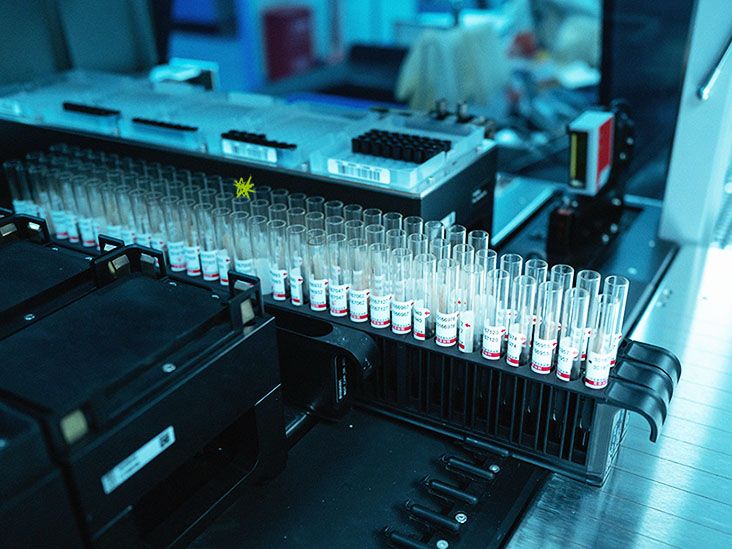Pain in the upper right abdomen or shoulder could be due to a liver problem. Identifying the underlying cause and getting proper treatment can help preserve liver health.
A healthy liver helps the body fight infections, cleans the blood, and plays a role in metabolism. It can also repair itself when damaged.
If the liver is unable to do its job properly, it can be life threatening. Liver pain may signal an underlying liver issue that requires addressing.
A person may experience liver pain in the upper right-hand part of the abdomen, the upper right shoulder, or the middle of the back near the lowest part of the ribs. The pain can be dull and nonspecific, but it can also be severe.
Liver pain can arise for various reasons. It is important to identify liver pain, find the cause, and get treatment that can help prevent irreversible damage.
Liver pain is often a sign of liver disease, which refers to any condition that causes liver inflammation or damage. Without treatment, the liver may eventually stop functioning.
Symptoms of liver disease often do not appear until more advanced stages, so it is important to be aware of liver pain and other symptoms that could signal a liver disorder.
Many different types of liver disease can cause liver pain. The following are a few examples:
Cholangitis
Cholangitis is inflammation of the bile duct system, usually due to a bacterial infection. The bile duct drains bile from the liver and gallbladder, carrying it to the small intestine.
Cholangitis can develop from an obstruction or blockage in the bile duct system, causing bile to back up. This may be due to gallstones, a tumor, or another cause which allows backflow of bacteria.
Hepatitis
Hepatitis is inflammation of the liver. The
- excess alcohol use
- toxins
- some medications
- certain medical conditions
There are five main types of hepatitis virus:
- Hepatitis A is detectable in the feces of a person with the virus, which can then be transmitted via contaminated water or food.
- Hepatitis B transmits through exposure to body fluids, such as blood and semen.
- Hepatitis C transmits through infected blood or sometimes sexual transmission.
- Hepatitis D is a secondary infection that only affects those who have hepatitis B.
- Hepatitis E transmits through the consumption of contaminated water or food.
The most common types of viral hepatitis in the United States are hepatitis A, hepatitis B, and hepatitis C.
Hepatitis can be acute, meaning sudden and short term, or chronic, meaning long term and persistent. Hepatitis B, C, and D cause chronic hepatitis, which can eventually lead to cirrhosis, liver failure, and liver cancer.
Liver abscess
A liver abscess is a pocket of infected fluid, or pus, that forms in the liver. An injury or infection from certain germs, such as bacteria, parasites, or fungi, can cause it.
An abscess can damage nearby tissue and can lead to bleeding, additional infections, and even death. Treatment may include an antibiotic or antifungal medication, and doctors may drain the abscess.
Follow-up imaging tests of the liver are usually conducted to ensure that the abscess is gone and that there is no permanent damage.
Cirrhosis
Cirrhosis is an irreversible scarring of the liver. The liver slowly worsens and becomes unable to work properly due to long-lasting injury.
Over time, scar tissue replaces healthy liver tissue, which can begin to block blood flow through the liver. A healthy liver can regenerate its damaged cells. If the damage is too severe or long lasting, the liver cannot completely repair itself and creates scar tissue instead.
Cirrhosis happens gradually, but as it worsens, the liver will begin to fail. This can lead to chronic liver failure or end stage liver disease, where the liver can no longer perform vital functions.
Budd-Chiari syndrome
This is a rare liver disease in which blood flow out of the liver via the portal vein is blocked. This can be due to a problem within the vein, such as a blood clot or swelling of the vessel walls narrowing the vein. It can also be due to compression of the vein from a process outside the vein itself.
Blood backs up in the liver, causing it to enlarge. In some cases, the spleen may also enlarge.
The buildup of blood causes an increase in blood pressure in the portal vein. This is the vein responsible for carrying blood to the liver from the intestines. This increase in pressure is known as portal hypertension.
Portal hypertension causes fluid to build up in the abdomen. The blocked veins cause the blood flow from the liver to the heart to slow down or stop.
Scarring of the liver or cirrhosis is also possible.
People whose blood is most likely to clot are also more at risk of Budd-Chiari syndrome. This includes people who are pregnant and those with a tumor, a chronic inflammatory disease, a clotting disorder, or an infection.
The effects of alcohol
Chronic alcohol misuse can lead to liver diseases such as hepatitis, cirrhosis, or steatosis (fatty liver).
The liver usually breaks down alcohol and removes it from the body. If a person consumes more alcohol than the liver can process, liver cells may be damaged or destroyed.
Liver disease due to alcohol can be reversible in more mild cases. However, a consistently high alcohol intake over time can lead to a buildup of fat and inflammation in the liver, which can result in alcohol-related cirrhosis. Cirrhosis due to alcohol is not reversible, but cutting out alcohol can help prevent further damage and may help improve symptoms.
Causes and risk factors of liver disease
Liver disease has several different causes, including:
- infection
- immune system problems
- genetic factors
- toxic effect of medications
- cancer
- chronic alcohol abuse
- fat building up in the liver
Factors that increase the risk of developing a liver disease or a related complication include:
- excess alcohol use
- injecting drugs or sharing needles
- sex without using a barrier method such as a condom
- exposure to certain chemicals or toxins
- diabetes
- obesity
Many conditions can cause liver pain, so it is important for people to contact a doctor to determine which one is present.
A doctor will carry out a physical examination and look at the person’s health history.
Other testing options may include:
- blood tests to assess liver function or identify specific liver problems or genetic conditions
- imaging tests, such as CT scans, MRIs, and ultrasounds to assess for liver damage
- tissue analysis, which involves taking a tissue sample from the liver for a lab test
Sometimes, liver pain will go away after making some lifestyle changes, such as abstaining from alcohol, losing weight, or following a healthful diet.
Other problems may require medication or surgery. For example, liver failure may require a liver transplant.
When to seek emergency care
A person should seek immediate medical treatment if they experience any of the following symptoms:
- severe pain, especially in the abdomen
- fever
- dark urine
- pale, bloody, or tar-colored stools
- nausea and vomiting
- weight loss
- yellowish skin
- severe tenderness when touching the abdomen
- swelling in the abdomen or in the legs and ankles
- itchy skin
- chronic fatigue
- loss of appetite
To help prevent or manage liver pain, it is advisable to establish and maintain a healthy lifestyle where necessary, such as:
- following a balanced diet
- staying hydrated
- limiting or avoiding alcohol consumption
- avoiding activities that may cause harm, such as sharing drug needles
- avoiding having sex without using a barrier method
- getting vaccinated against hepatitis, if appropriate
- getting screened for hepatitis, if appropriate
- using medications only as directed
- maintaining a moderate weight
Even if liver pain occurs, individuals can lead a typical life with the proper treatment and necessary lifestyle changes.
Liver pain can range from dull and achy to more severe pain in the upper right abdomen, the upper right shoulder, or middle of the back. This type of pain can be a sign of underlying liver disease.
Working with a doctor to determine the underlying cause and getting proper treatment can help preserve liver health.




